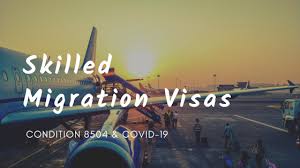Last year no doubt has been challenging both for Migration Agents as well as businesses trying to fill in skills shortage. The introduction of subclass 482 visa has seen a decline of 28% of sponsored visas granted, leaving businesses with severe skills shortage.
The government’s response is to enter into a Designated Area Agreement (DAMA). By way of background, the Designated Area Migration Agreement (DAMA) programme has been developed to supplement the workforce strategies of states, territories and regions, to support economic performance and help them adjust to changing economic conditions.
The DAMA is a two-tier agreement: the first tier consists of an overarching three-year deed of agreement with a designated area representative setting out occupations, ceilings and concessions; and the second tier comprising individual labour agreements with direct employers.
DAMAs establish collaborative arrangements, with shared roles and responsibilities, between the Australian Government and regional or state and territory authorities.
The overarching nature of a DAMA allows employers streamlined access to a broader range of overseas workers than available through the standard subclass 482 visa programme, without the need to individually negotiate terms and conditions. DAMAs are attractive to small businesses which may not have the resources to develop a labour agreement directly with the government.
Whilst DAMAs vary from state to state, the key elements for DAMA similar to those of a labour agreement, however specifics include:
· The utilisation of labour agreement stream of the TSS programme for businesses enter into a labour agreement with the Australian Government and workers are then granted a subclass 482 visa.
· pathways to permanent residency for DAMA visa holders (including transitional arrangements for existing visa holders)
· a broad range of occupations that reflect skilled and semi-skilled shortages, with no caveats to apply
· English language concessions for some occupations
· salary concessions that in some instances however these are generally specific from state to state, ensuring that worker terms and conditions of employment are not eroded, and state businesses and consumers are not subjected to inflationary costs
· a range of risk and integrity actions to ensure that the rights of both employees and employers are protected
As an organisation at the forefront of skilled migration, at this point in time Northern Territory has negotiated DAMA and NSW submitted a Designated Area Migration Agreement (DAMA) to the Federal Government. As the first of its kind in NSW to streamline the visa application process, the DAMA is set to make it easier for migrant employees and employers to fill vacant positions.
As mentioned earlier, DAMAs are custom-designed arrangements which support a tailored, regional response to labour needs. They are an important tool in assisting regions to manage workforce strategies that support local growth. The over-arching nature of these agreements allows employers targeted and streamlined access to a broader range of overseas workers than allowed under standard State and National skilled migration programmes. The DAMA will negotiate terms and conditions, cutting down on individual employer visa worker hiring costs.
Similar to Labour Agreements, DAMA’s are granted for five years.
Businesses can access the DAMA if they are actively operating in a particular state and:
· are viable and have been operating for at least 12 months
· have no history of not meeting its obligations to employees
· are looking to employ overseas workers to fill full-time positions with duties that align with one of the occupations on the State Specific DAMA list
· can demonstrate they cannot fill the position locally with Australian citizens or permanent residents
· can provide terms and conditions of employment to overseas workers that are in accordance with those offered to Australian workers employed in the region.

